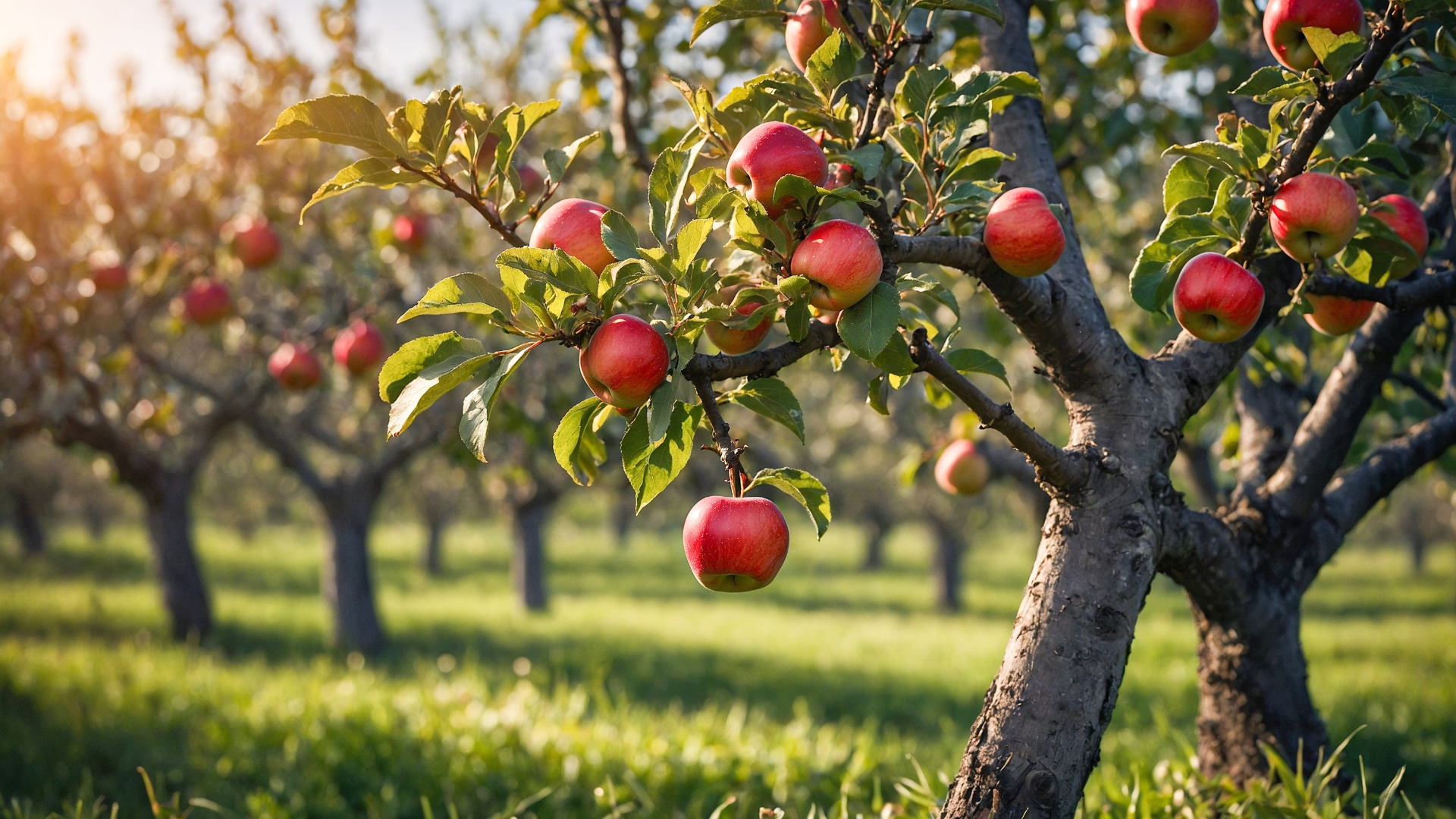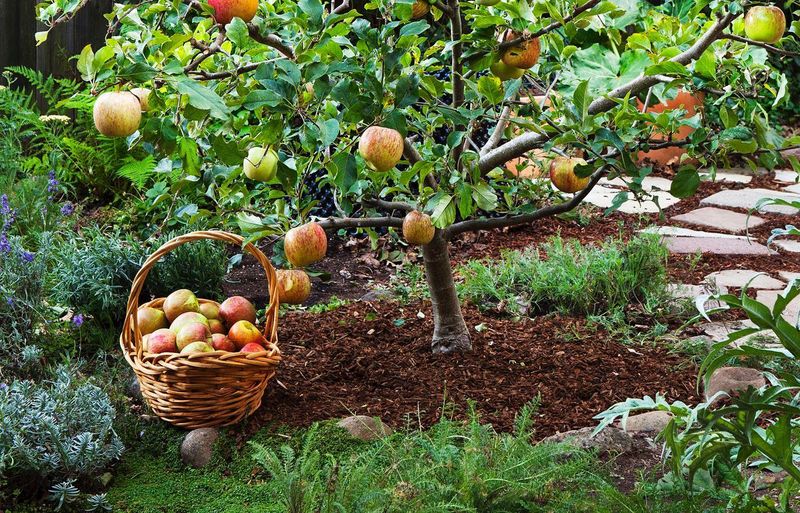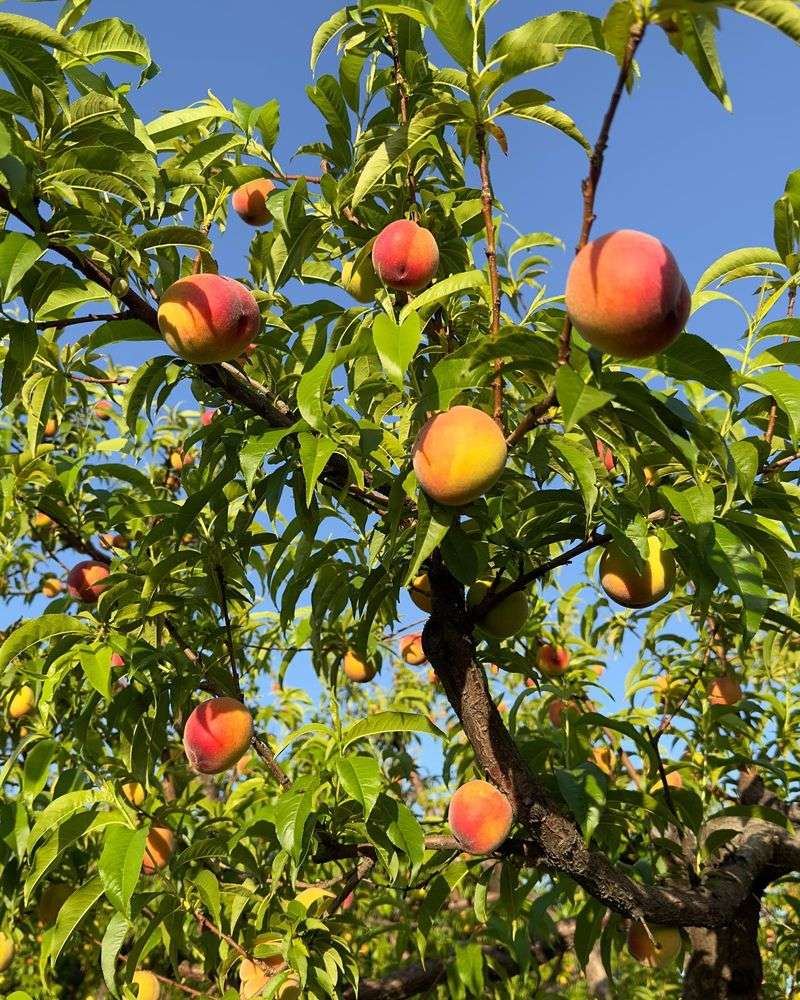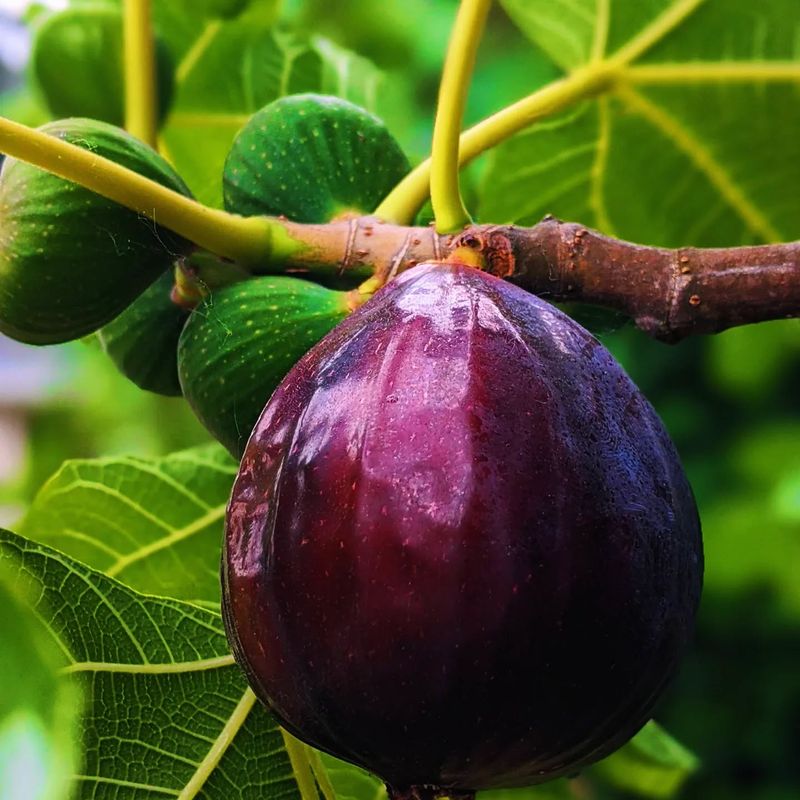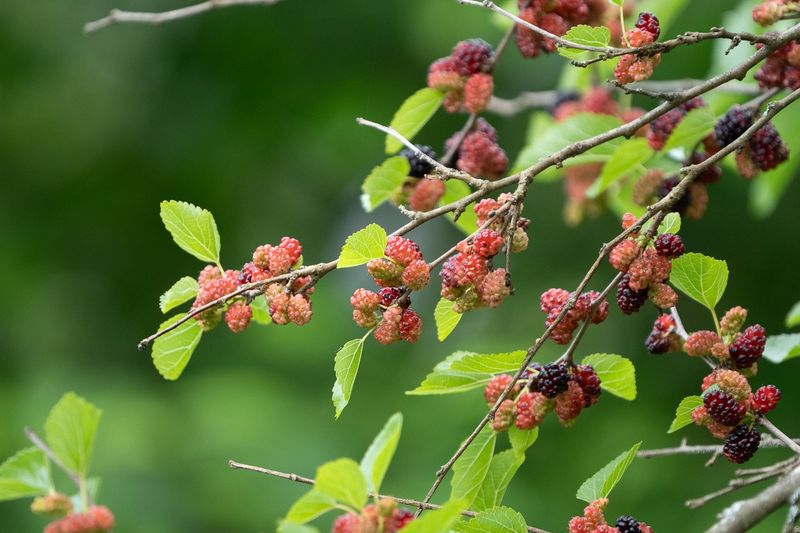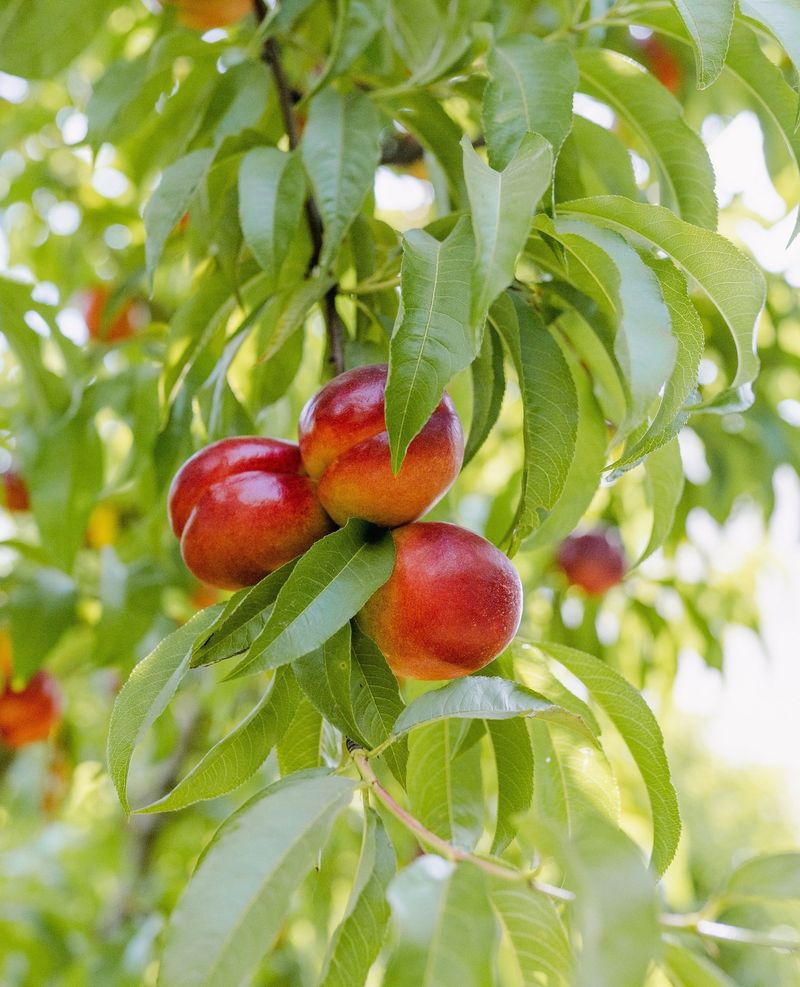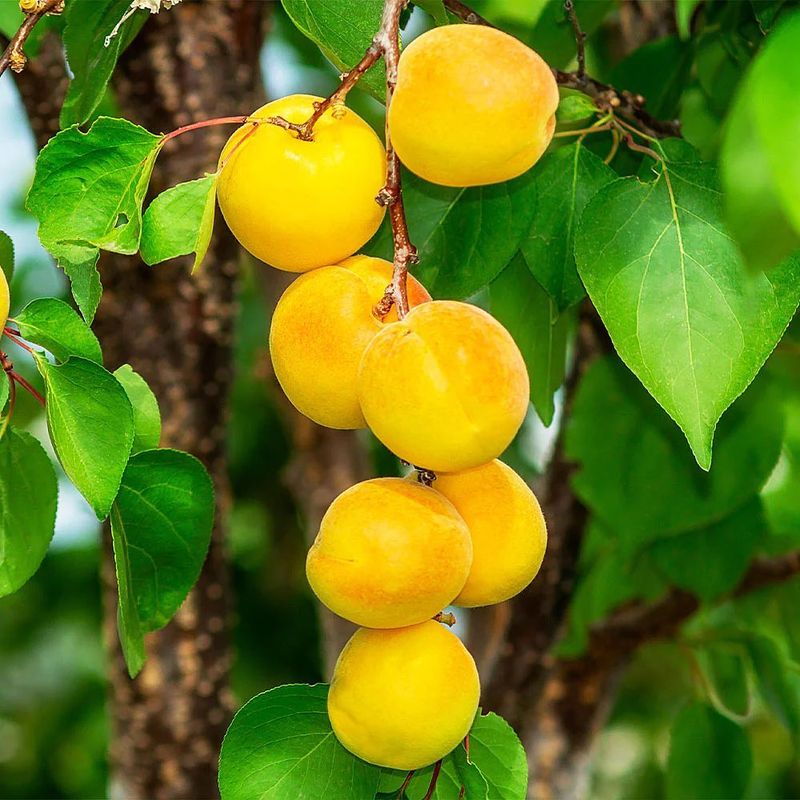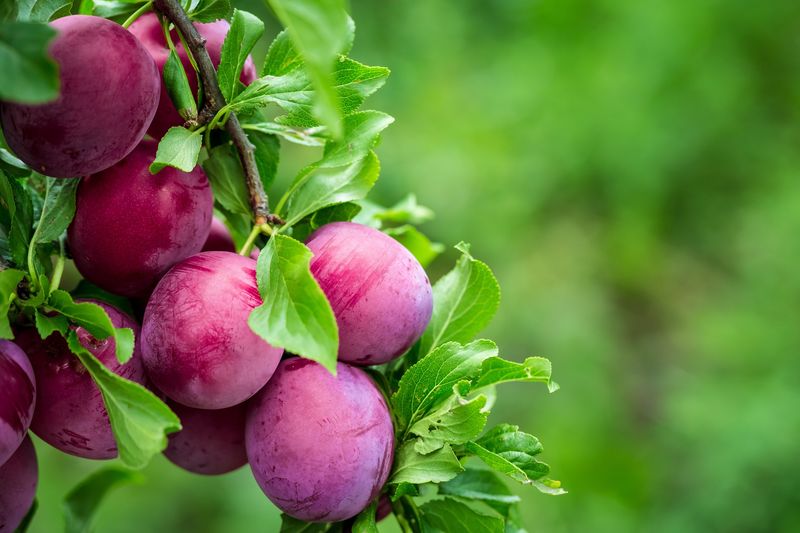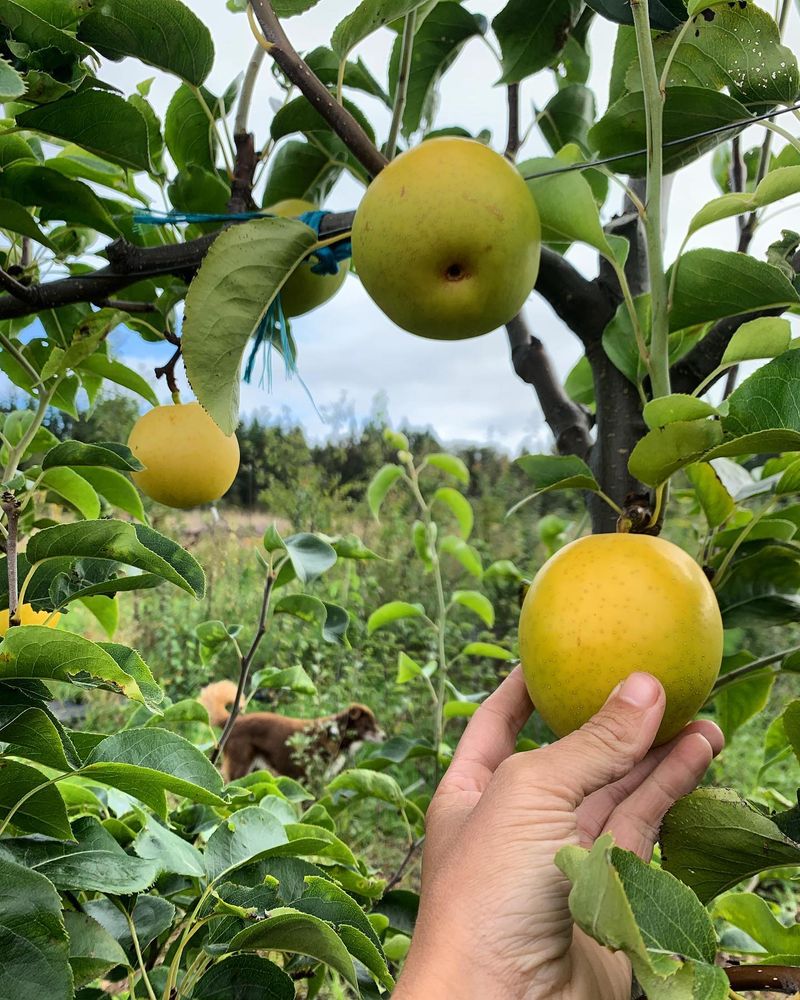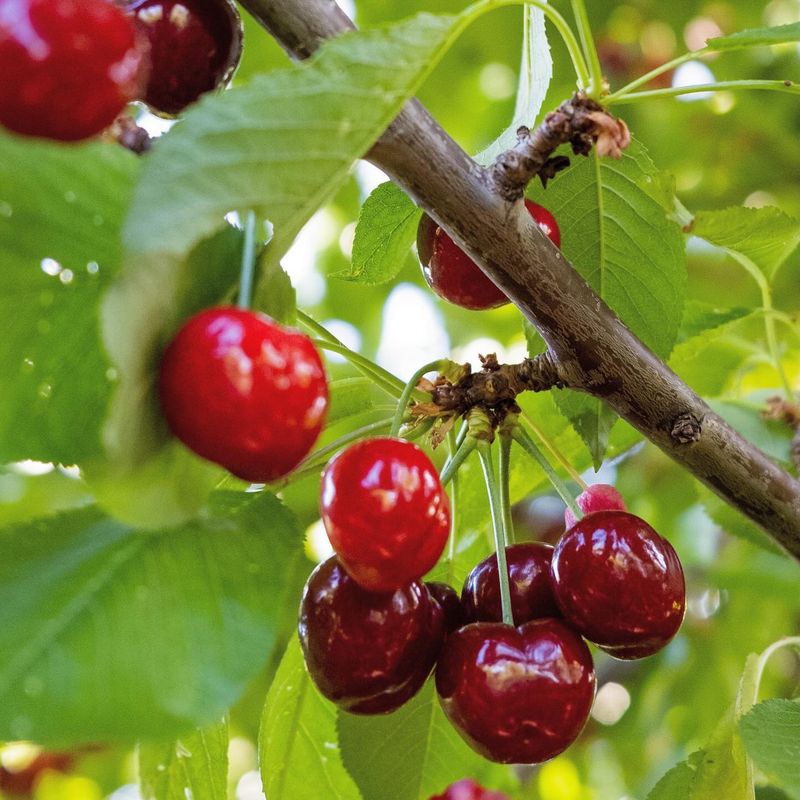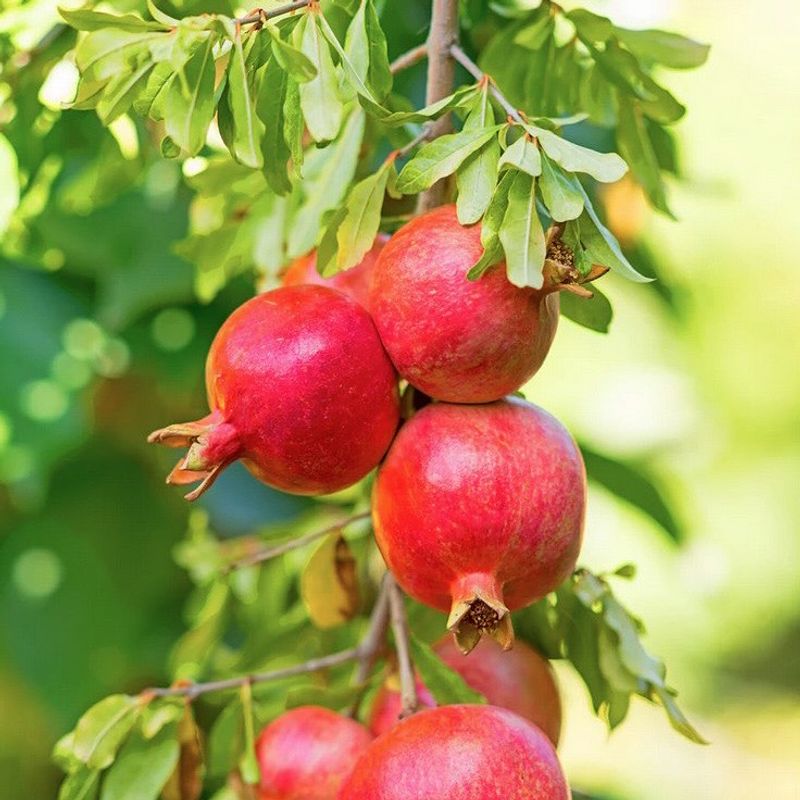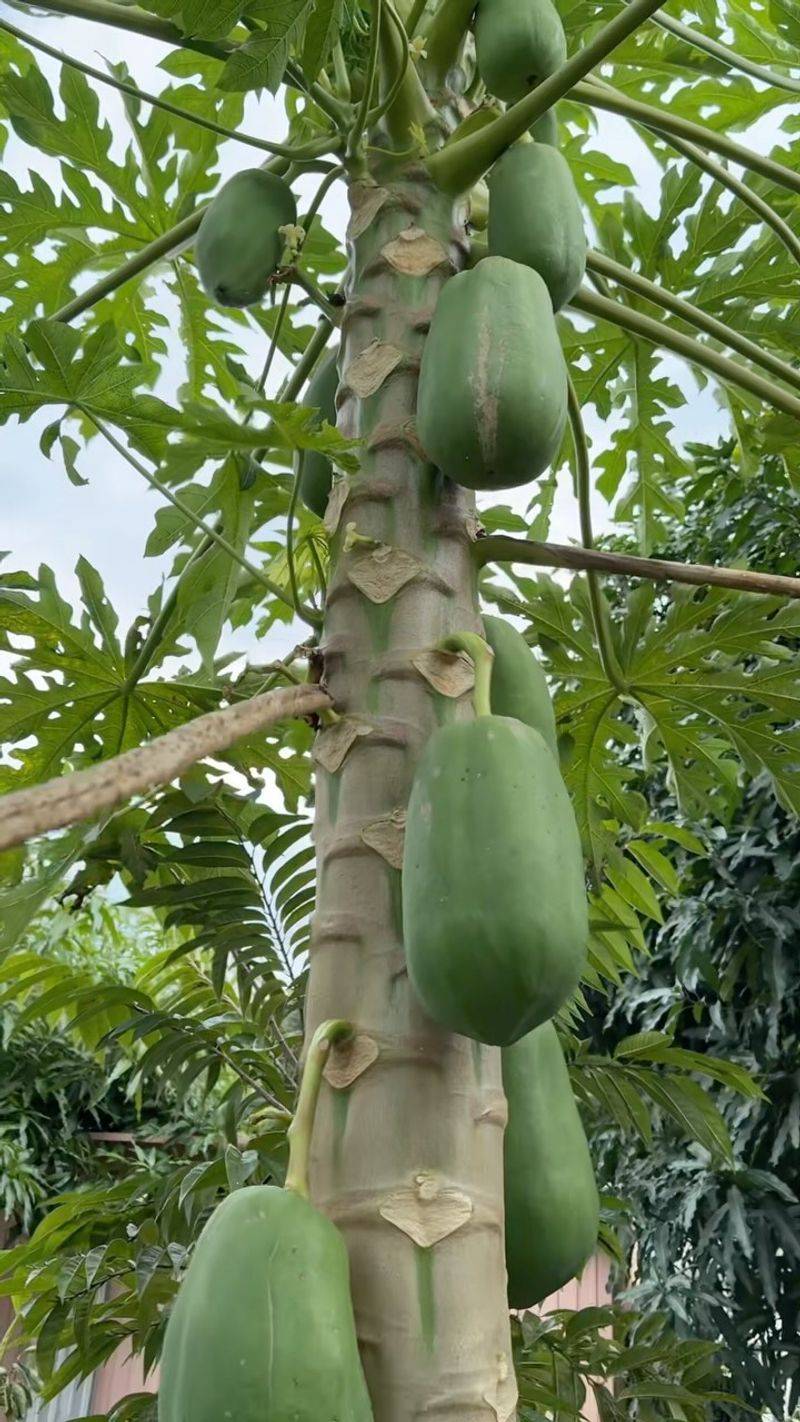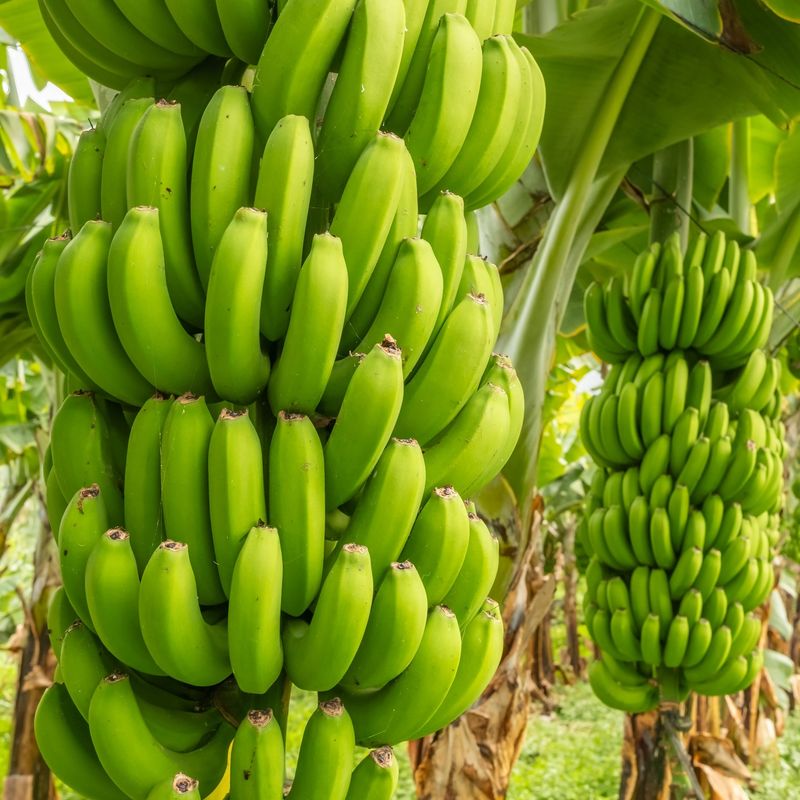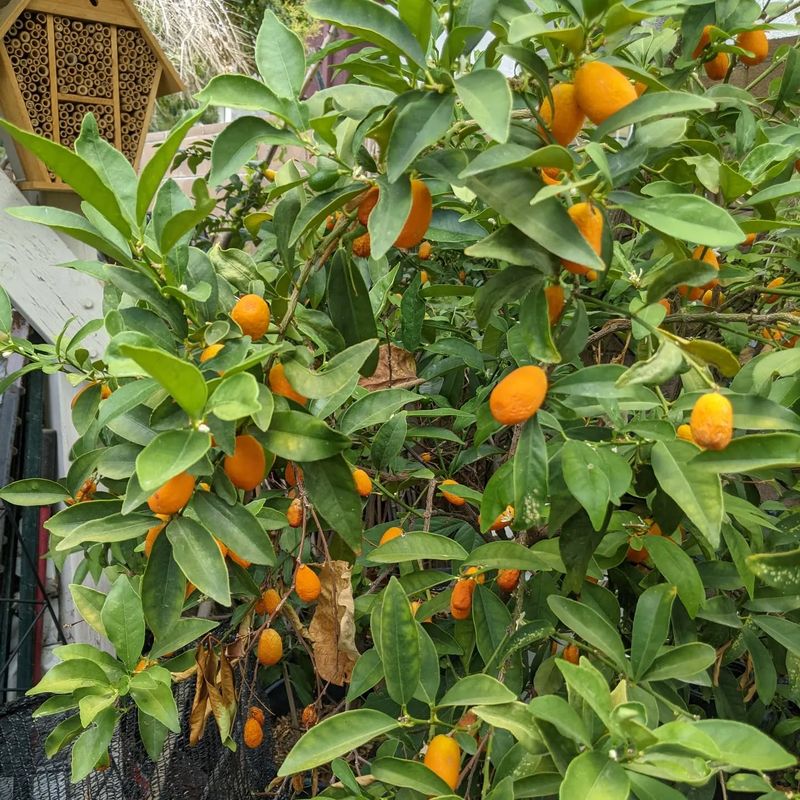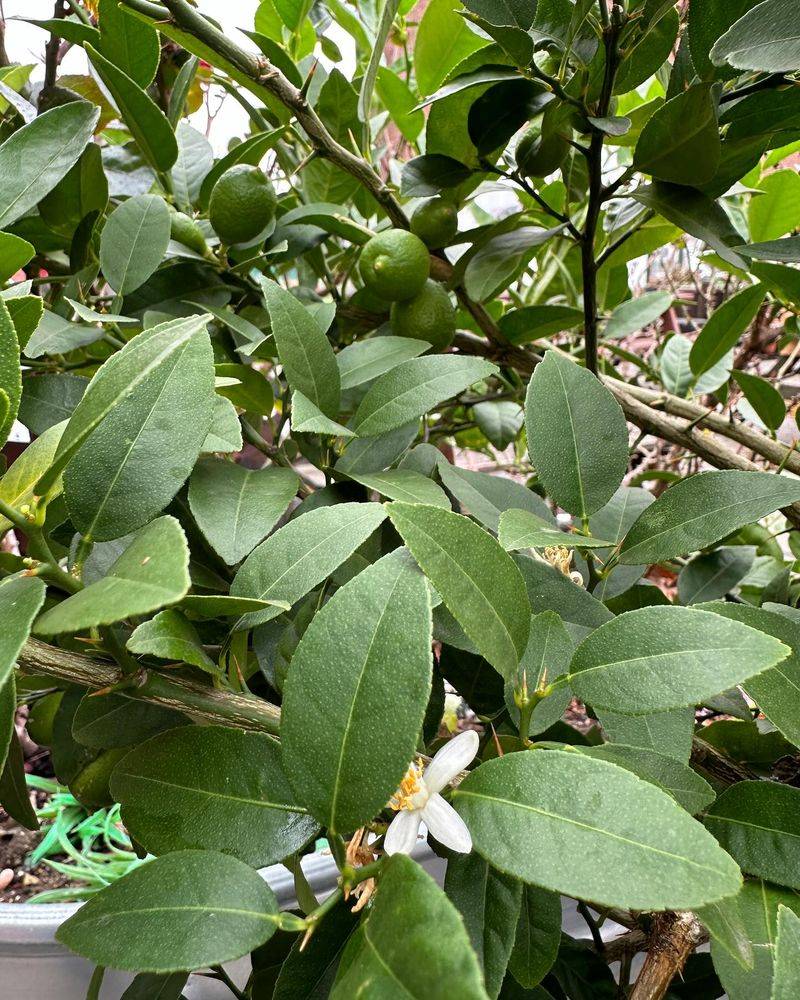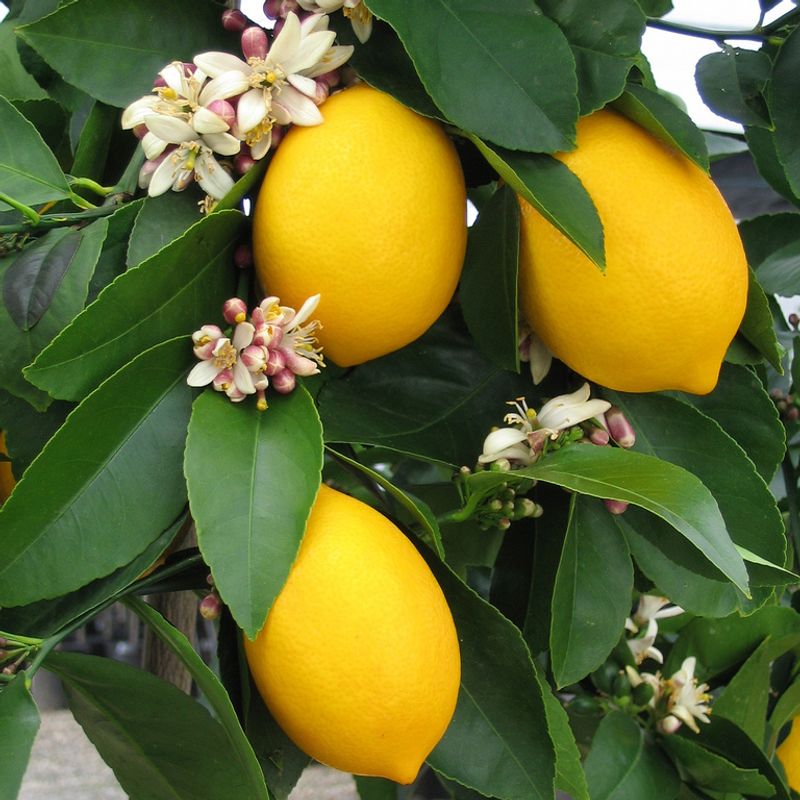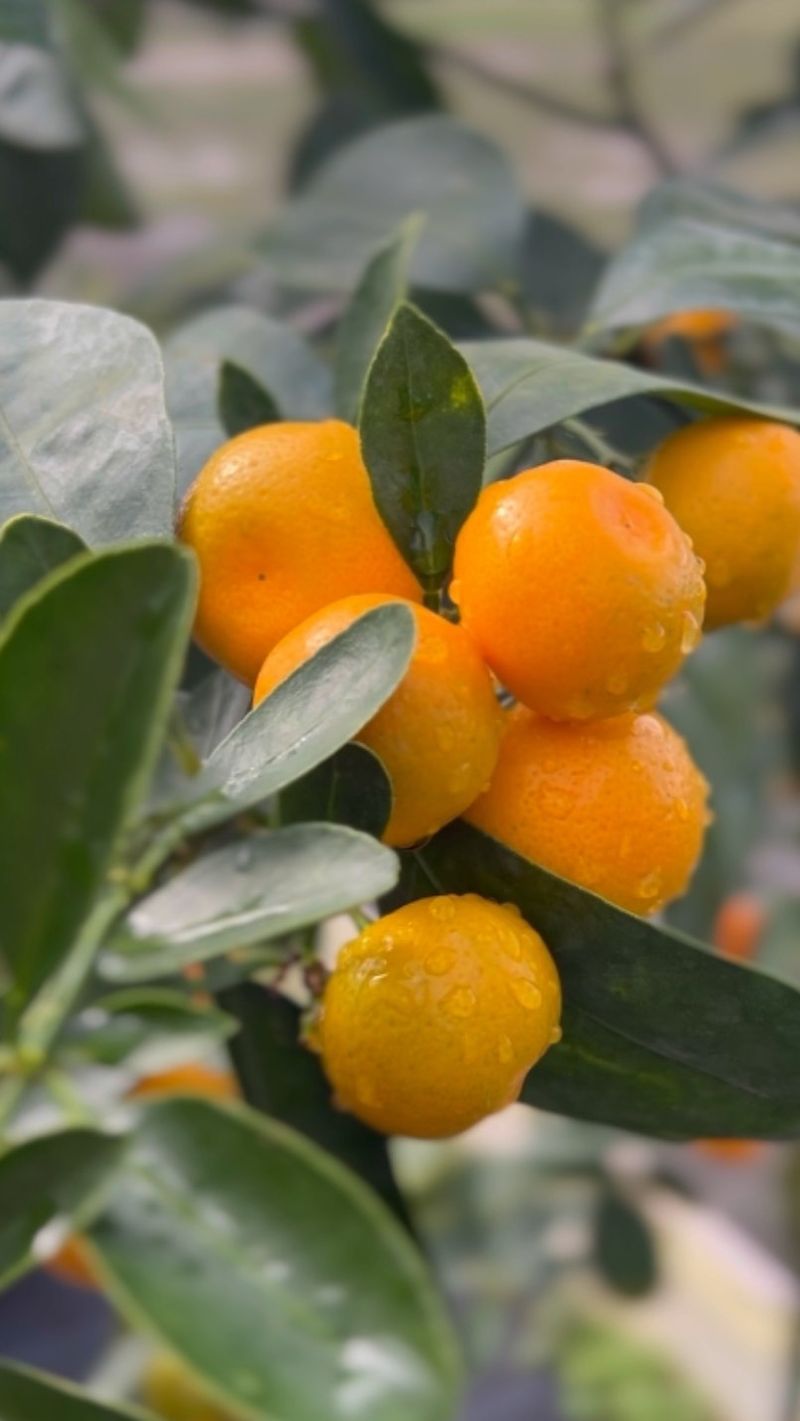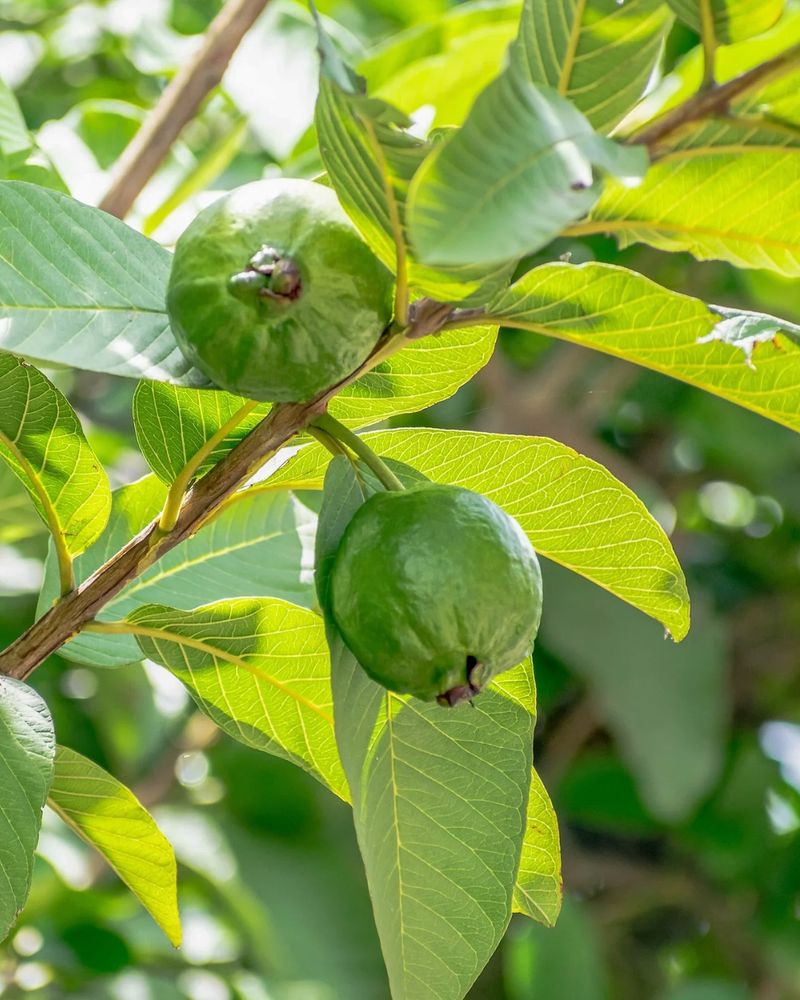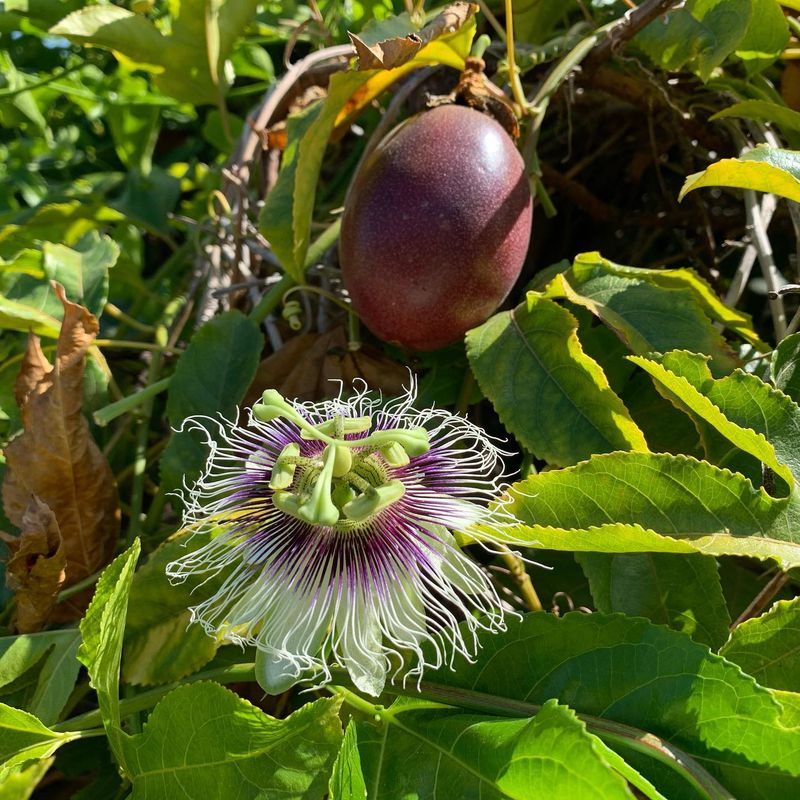Fruit trees might take time, but some give back faster than you’d expect. These varieties are perfect if patience isn’t your strong suit but fresh fruit still sounds like a dream.
Plant them this year, and you could be picking your own juicy harvest by next summer. It’s a sweet little investment that pays off sooner than you’d think. Here’s a lineup worth digging into.
1. Dwarf Apple
These compact versions of traditional apple trees produce full-sized fruit in record time. Many dwarf varieties like ‘Anna’ or ‘Dorsett Golden’ can bear fruit within their first year after planting, especially when purchased as two-year-old nursery stock.
Perfect for small spaces, they typically grow only 8-10 feet tall. Their shallow root systems make them ideal for containers if you’re short on garden space. Just ensure they receive at least 6 hours of direct sunlight daily.
2. Peach
Known for their quick production timeline, peach trees often surprise gardeners with fruit in their very first summer. Self-pollinating varieties like ‘Elberta’ or ‘Redhaven’ mean you only need one tree to get a substantial harvest.
Choose bare-root trees during dormant seasons for best results. They thrive in USDA zones 5-9 and prefer well-drained soil. Their beautiful pink blossoms in spring make them ornamental additions to any landscape before the fuzzy fruits appear.
3. Fig
Hardy and adaptable, fig trees can produce two crops annually in warmer climates. Varieties like ‘Brown Turkey’ and ‘Chicago Hardy’ are particularly quick to fruit, often producing their first harvest within a year of planting.
Their broad, distinctive leaves create beautiful garden focal points. Figs perform exceptionally well in containers, which actually helps stimulate earlier fruiting by restricting root growth. They’re remarkably drought-tolerant once established, making them low-maintenance options for busy gardeners.
4. Mulberry
Fast-growing and incredibly productive, mulberry trees can shoot up several feet annually. The ‘Dwarf Everbearing’ variety starts producing sweet, blackberry-like fruits within the first year after planting, continuing throughout summer.
Birds absolutely love mulberries, so you’ll attract wonderful wildlife to your garden. Consider planting where fallen fruit won’t stain patios or walkways. These adaptable trees tolerate partial shade and various soil conditions, making them suitable for challenging garden spots.
5. Nectarine
Essentially peaches without fuzz, nectarine trees share the same speedy production timeline. Varieties like ‘Fantasia’ or ‘Sunred’ can produce sweet, aromatic fruits within a year of planting when purchased as established nursery stock.
Their gorgeous spring blossoms rival ornamental flowering trees. Nectarines prefer full sun and well-drained soil with protection from late frosts. Regular pruning keeps them productive and prevents branches from breaking under heavy fruit loads.
6. Apricot
Early bloomers with delicate pink flowers, apricot trees can reward you with sweet golden fruits by their second summer. Self-fertile varieties like ‘Moorpark’ or ‘Goldcot’ are excellent choices for home gardeners wanting quick harvests.
Plant them where they’ll get morning sun but some afternoon shade in hotter climates. Their shallow roots benefit from mulch to retain moisture. Apricots have lower chill requirements than many other stone fruits, making them suitable for milder winter regions.
7. Plum
Japanese plum varieties like ‘Methley’ and ‘Santa Rosa’ can produce sweet, juicy fruits within a year of planting. Their prolific nature means you’ll often need to thin fruits to prevent branch breakage under the weight of the abundant harvest.
Beautiful white spring blossoms make plums ornamental additions to any landscape. They adapt well to various soil types but prefer consistent moisture. Consider planting two different varieties nearby for improved pollination and even heavier fruit set.
8. Pear
Asian pear varieties like ‘Shinseiki’ or ‘Twentieth Century’ produce crisp, apple-shaped fruits much faster than their European cousins. When purchased as two-year-old trees, they often bear fruit the very next season after planting.
Their attractive, symmetrical shape adds structural interest to gardens even in winter. Asian pears are more resistant to fire blight than European types. They require minimal pruning and maintenance, making them excellent choices for novice fruit growers.
9. Cherry
Dwarf cherry varieties, especially tart cherries like ‘North Star’ or ‘Montmorency,’ can produce fruit within their first or second year. Their compact size makes harvesting easy without ladders, unlike their towering standard counterparts.
Spring brings spectacular floral displays before the fruits develop. Tart cherries are self-fertile, meaning you’ll get fruit with just one tree. They’re more disease-resistant and cold-hardy than sweet cherries, making them suitable for northern gardens.
10. Pomegranate
Bursting with ruby-red seeds, pomegranates can produce their first fruits within a year of planting. Varieties like ‘Wonderful’ and ‘Sweet’ are particularly precocious, flowering with striking orange-red blossoms before setting fruit.
Surprisingly drought-tolerant once established, they thrive in hot, dry climates. Their naturally shrubby growth habit makes them perfect as ornamental hedges or container specimens. The fruits continue to ripen after picking, developing sweeter flavor profiles with time.
11. Papaya
In warm climates, papaya plants grow astonishingly fast, often producing fruit within 10-12 months of planting. These tropical treasures aren’t technically trees but large herbaceous plants with hollow, non-woody trunks topped with palm-like foliage.
Plant female or hermaphrodite varieties for fruit production. Their exotic appearance makes stunning landscape focal points. Papayas need consistent moisture and protection from strong winds that can damage their relatively fragile structure.
12. Banana
Cold-hardy banana varieties like ‘Musa Basjoo’ or ‘Dwarf Cavendish’ can produce fruit within 9-12 months in warm climates. Their massive tropical leaves create instant drama in any landscape, even before fruiting begins.
Each plant produces one bunch of bananas before the fruiting stem dies, but new pups emerge from the base. They prefer rich, moist soil and protection from strong winds. Container-grown bananas can be moved indoors during winter in colder regions.
13. Kumquat
These miniature citrus trees produce small, oval fruits with edible sweet rinds and tart flesh. Varieties like ‘Nagami’ or ‘Meiwa’ can bear fruit within a year when purchased as established nursery plants.
Their compact size makes them perfect for containers on sunny patios. Unlike many citrus trees, kumquats are remarkably cold-hardy, surviving brief dips to 18°F. The glossy dark green foliage and bright orange fruits provide year-round ornamental interest.
14. Key Lime
These small citrus trees produce aromatic, juice-packed fruits perfect for pies and cocktails. When purchased as 2-3 year nursery stock, they often produce fruit within their first year in your garden.
Their compact size makes them ideal for containers on sunny patios. The fragrant white blossoms appear year-round in warm climates, followed by small green fruits. Protect them from temperatures below 32°F by moving containers indoors during winter.
15. Meyer Lemon
Sweeter than standard lemons, Meyer lemons can produce fruit year-round in warm climates. Even young trees purchased from nurseries often arrive with small fruits already developing, providing near-immediate harvests.
Their compact growth habit makes them perfect for containers. The fragrant white blossoms with purple accents appear throughout the year, filling gardens with sweet perfume. Their glossy, dark green foliage remains attractive even when not fruiting.
16. Calamondin
Often called miniature oranges, these prolific citrus trees produce small, tangy fruits resembling tiny tangerines. Young nursery plants frequently bear fruit within months of planting, continuing production throughout the year in warm climates.
Their natural dwarf habit makes them perfect for containers or small gardens. The fruits can hang on the tree for months without deteriorating, providing long-lasting ornamental value. Their exceptional cold tolerance makes them suitable for regions where other citrus varieties struggle.
17. Guava
Tropical guava trees grow rapidly and can produce fruit within a year of planting. Varieties like ‘Ruby Supreme’ or ‘Strawberry’ yield sweet, aromatic fruits with distinctive flavors unlike anything found in grocery stores.
Their attractive, peeling bark adds visual interest to landscapes. The sweet fragrance of guava blossoms attracts beneficial pollinators to your garden. They adapt well to container growing, which allows gardeners in colder regions to move them indoors during winter.
18. Passionfruit
Technically vines rather than trees, passionfruit plants grow vigorously and can produce their exotic fruits within the first year. Their spectacular flowers resemble something from another planet, with intricate purple or white structures that bloom before setting fruit.
Provide strong support structures for these enthusiastic climbers. The wrinkled purple or yellow fruits contain juicy, seed-filled pulp with a tropical flavor profile. They’re perfect for covering fences or pergolas while producing delicious harvests.

